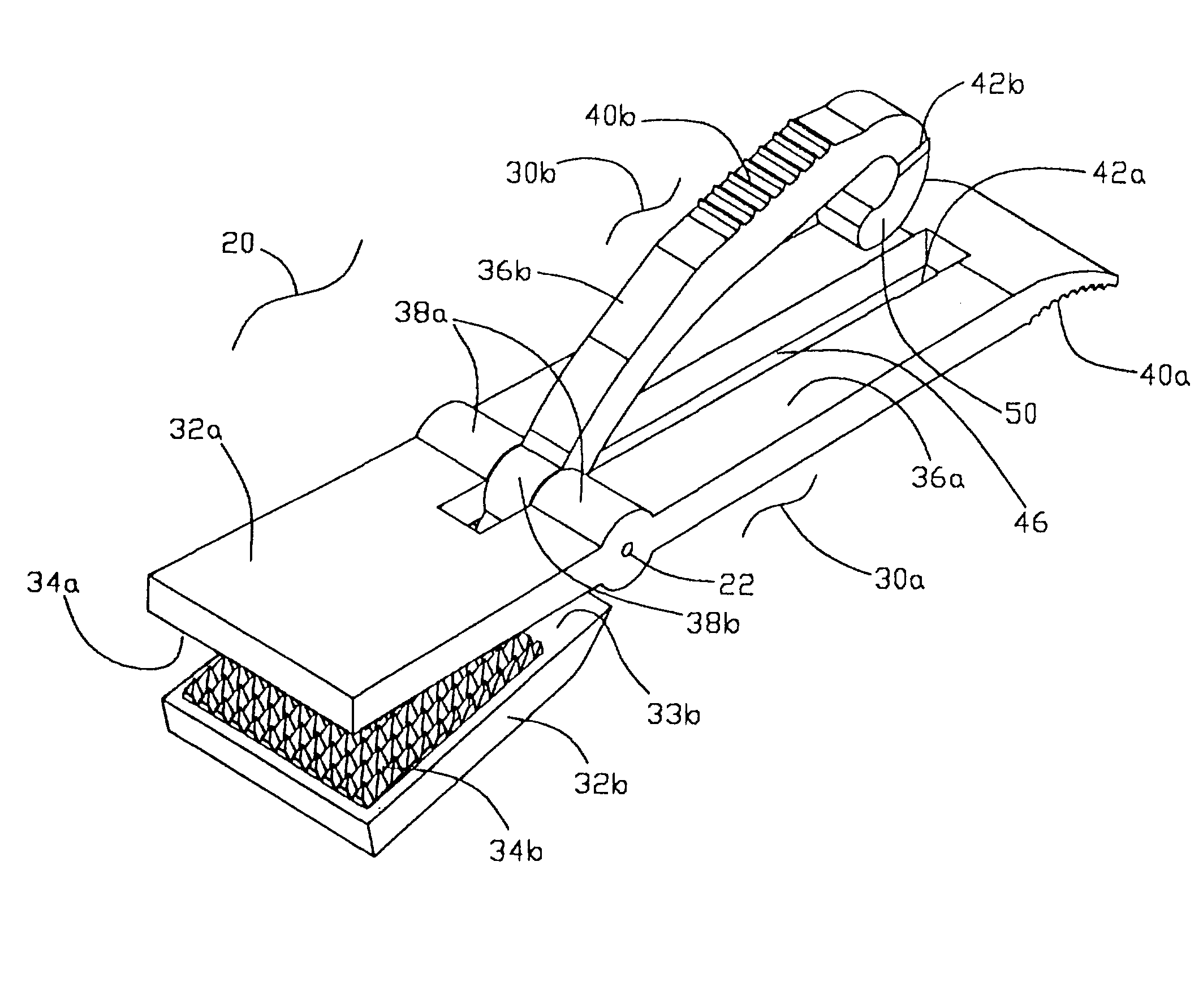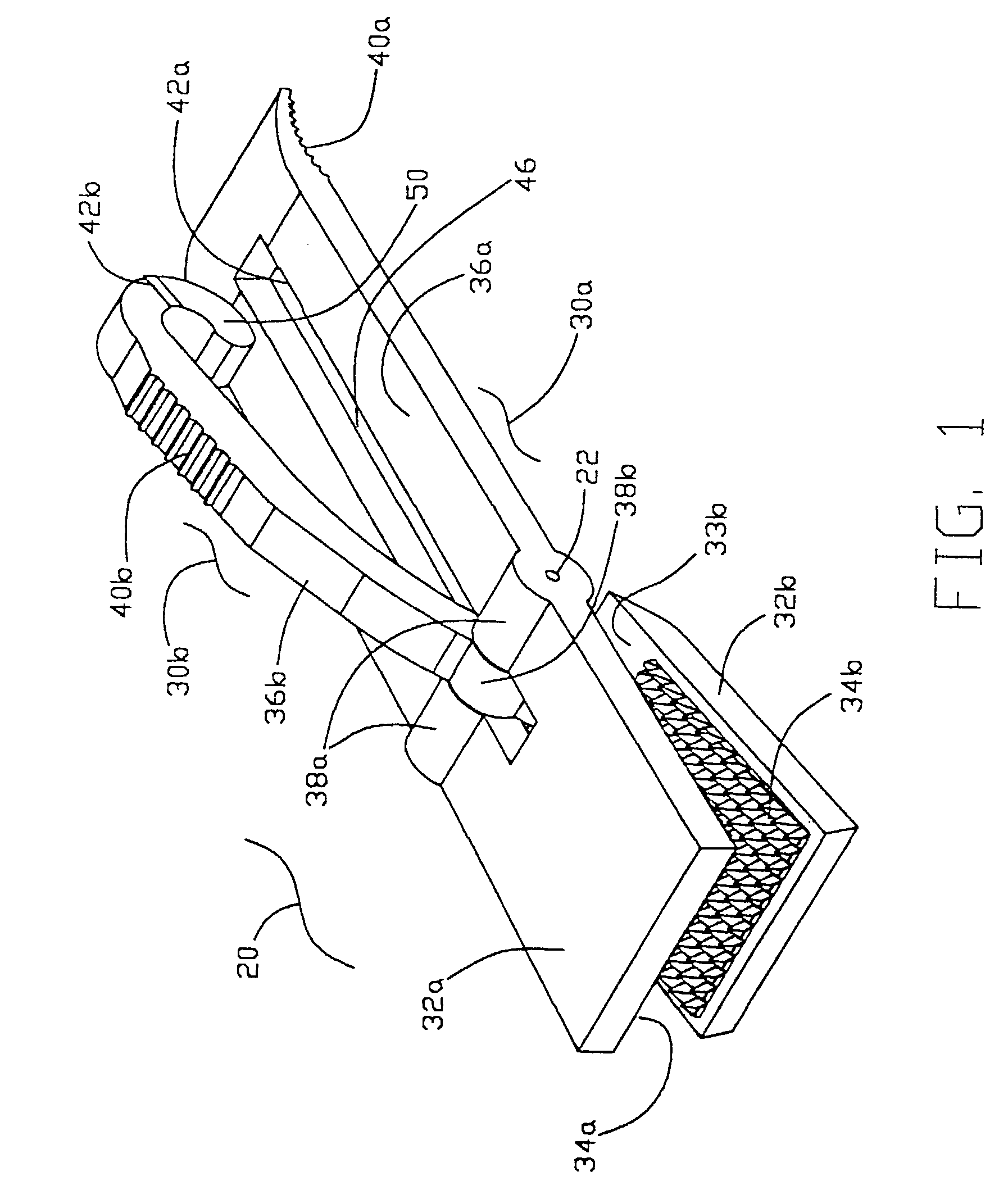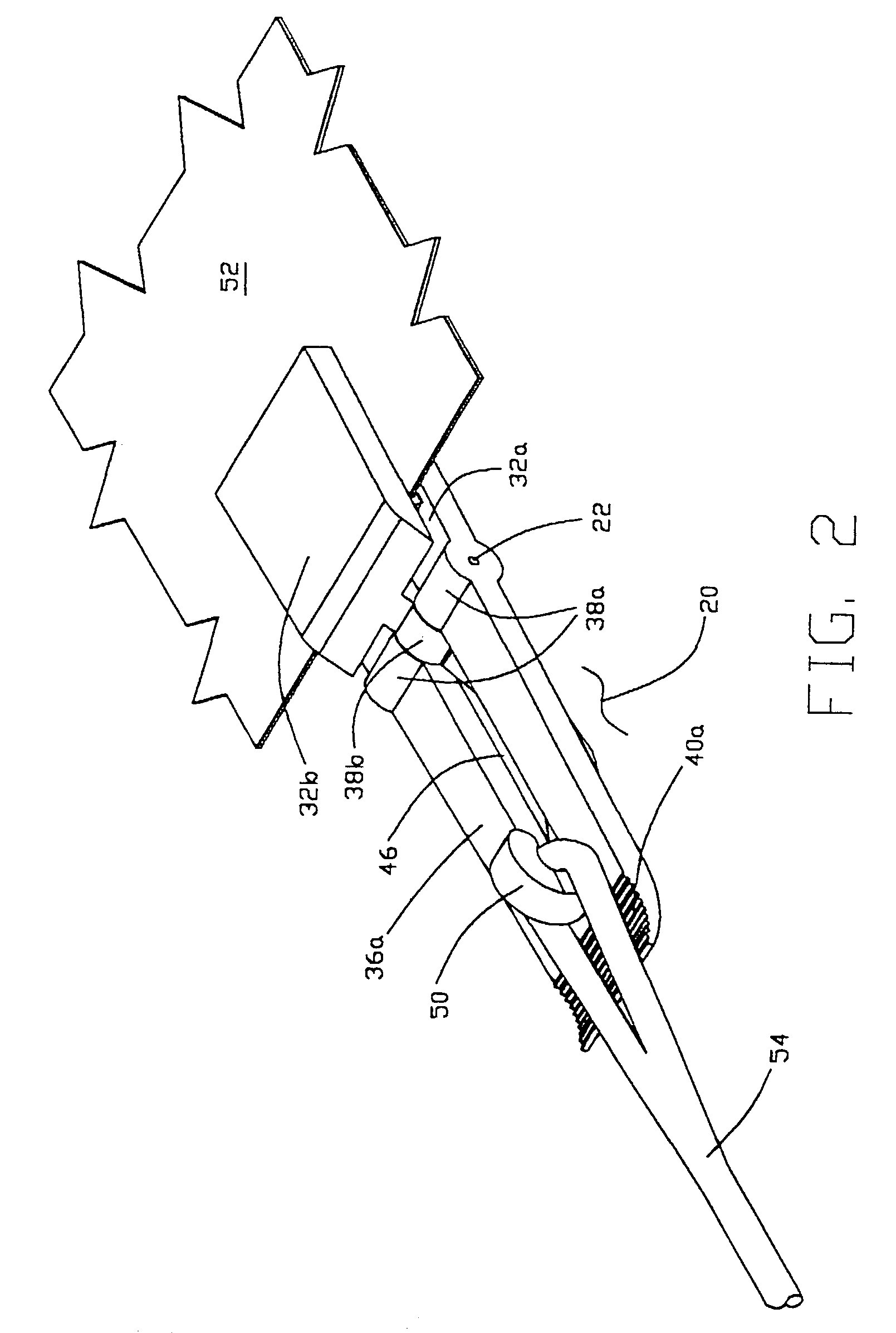Locking clip
a technology of locking clip and clip, which is applied in the field of clips, can solve the problems of deterioration of canvas, insufficient number of grommets, insufficient strength, and insufficient spacing for providing the necessary support, etc., and achieves the effect of facilitating the installation of the clip
- Summary
- Abstract
- Description
- Claims
- Application Information
AI Technical Summary
Benefits of technology
Problems solved by technology
Method used
Image
Examples
Embodiment Construction
[0040]a. Overview
[0041]FIG. 1 shows a clip assembly 20 in accordance with the present invention, and FIG. 2 shows this clip assembly engaging a sheet of material 52 and secured by a rope 54. The preferred embodiment of the clip assembly 20 is formed of two major members, a first gripper arm member 30a (also shown in FIG. 3), and a second gripper arm member 30b (also shown in FIG. 4), which are joined by a hinge pin 22 in opposition to each other to form a pliers like arrangement for gripping a sheet of material 52.
[0042]Each of the first and second gripper arm members 30a, 30b includes several corresponding counterparts including (a) opposing first and second jaw portions 32a, 32b that provide structural support for the corresponding first and second grip elements 34a, 34b which engage the sheet of material 52; (b) first and second lever arm portions 36a, 36b that extend from the first and second jaw portions 32a, 32b to provide leveraged activation of the first and second jaws 32a,...
PUM
 Login to View More
Login to View More Abstract
Description
Claims
Application Information
 Login to View More
Login to View More - R&D
- Intellectual Property
- Life Sciences
- Materials
- Tech Scout
- Unparalleled Data Quality
- Higher Quality Content
- 60% Fewer Hallucinations
Browse by: Latest US Patents, China's latest patents, Technical Efficacy Thesaurus, Application Domain, Technology Topic, Popular Technical Reports.
© 2025 PatSnap. All rights reserved.Legal|Privacy policy|Modern Slavery Act Transparency Statement|Sitemap|About US| Contact US: help@patsnap.com



